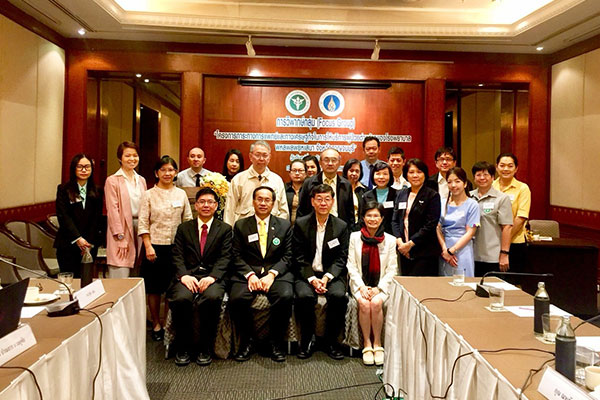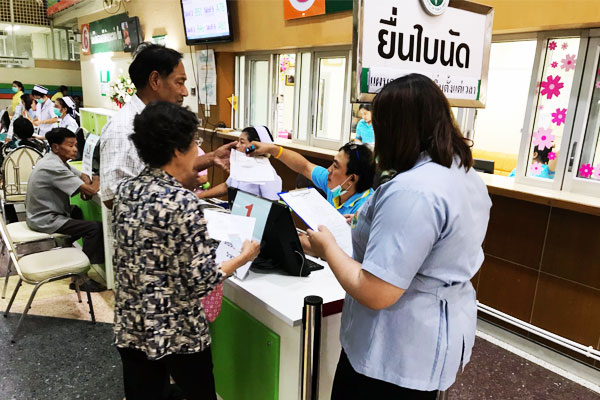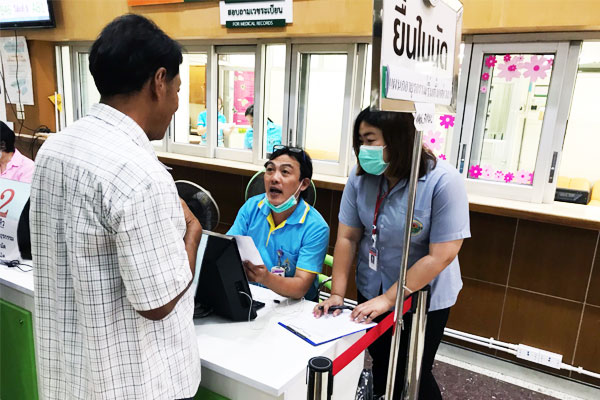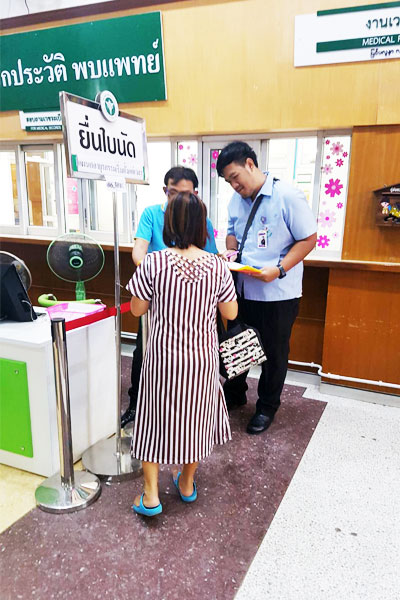Medical and Economic Burden of Healthcare Services for Immigrants at Phaholpolpayuhasena Hospital, Kanchanaburi
Vaccine Trial Centre, Faculty of Tropical Medicine, Mahidol University



Medical and Economic Burden of Healthcare Services for Immigrants at Phaholpolpayuhasena Hospital, Kanchanaburi
Vaccine Trial Centre, Faculty of Tropical Medicine, Mahidol University
Title :
Medical and Economic Burden of Healthcare Services for Immigrants at Phaholpolpayuhasena Hospital, Kanchanaburi
Researchers :
1.) Punnee Pitisuttithum (Faculty of Tropical Medicine, Mahidol University)
2.) Rakpong Wiangcharoen (Paholpolpayuhasena Hospital)
3.) Chuenrutai Yeekian (Queen Savang Vadhana Memorial Hospital)
4.) Pornsawan Attavinijtrakarn (Paholpolpayuhasena Hospital)
5.) Somjet Laoleukiet (Paholpolpayuhasena Hospital)
6.) Pratap Singhasivanon (Faculty of Tropical Medicine, Mahidol University)
7.) Yot Teerawattananon (The Health Intervention and Technology Assessment Program (HITAP))
8.) Rapeepong Suphanchaimat (The International Health Policy Program (IHPP))

Background : Phaholpolpayuhasena Hospital, Kanchanaburi Province, is a provincial hospital under the Ministry of Public Health, which provides healthcare services to Myanmar migrant patients. This study aimed to estimate the medical burden and the related public-health services for migrant patients seeking care at Phaholpolpayuhasena Hospital, including the disease categories leading to the healthcare needs of migrant patients in Thailand.
Methodology : This study collected data for medical services provided to Myanmar patients at Phaholpolpayuhasena Hospital including basic demographics, illness information, socio-economic characteristics, and quality of life, and medical data. The data were drawn for 412 outpatient and 107 inpatient records. The total direct and indirect medical costs were calculated. Outpatient costs included all expenses per patient: included hospitalization during the 1 year October 1, 2016 to September 30, 2017. The study results, then were used for focus-group discussions among policy stakeholders, including representatives of the Department of Health Service Support, National Health Security Office, the National Health Insurance Office, Migrant Workers Fund, Samut Sakhon Hospital, and Krathumbaen Hospital.


Results : Most migrant patients seeking health care at Phaholpolpayuhasena Hospital were likely to live permanently in Thailand, awaiting approval of their migrant status. They lived at the employer’s house, or had their own house and income; the average age was 34.2 years; 69.4% were married. The five most common diseases (as classified by ICD-10) among the outpatients were pregnancy, childbirth and the puerperium (15.3%); diseases of the digestive system (11.7%); diseases of the genitourinary system (11.2%); diseases of the respiratory system (8.5%); and the diseases of musculoskeletal system & connective tissue (8.0%). The 5 most common disease (as classified by ICD-10) among inpatients were injury, poisoning & consequences of external causes (30.8%); diseases of the respiratory system (12.1%); pregnancy, childbirth & the puerperium (11.2%); infectious & parasitic diseases except HIV (9.3%); and diseases of the circulatory system (6.5%).
When the total 412 outpatients were classified by medical department, the Department of Medicine was highest (35.7%), followed by the ANC Department (14.6%). Among the 107 inpatients, the Department of Medicine (28.0%) was highest, followed by the Department of Pediatrics (18.8%). The treatment cost according to the hospital cost or calculated by adjusted HITAP2560 outpatient cost were consistent.
The top 5 highest medical costs among outpatients classified by clinical disease group, were as follows, respectively: cancer (57,689 Baht), trauma (48,875 Baht), newborn (36,040 Baht), NCD (18,459 Baht), and obstetrics (18,179 Baht). Of the clinical disease groups, the percentage of medical costs paid by the patient was highest for obstetrics. The average medical costs per inpatient by HITAP2560 and hospital-based calculation showed little difference, at 24,646 Baht and 26,810 Baht, respectively.

The top 5 highest medical costs among inpatients, classified by clinical disease group, were Communicable Diseases (50,053 Baht), Trauma (45,769 Baht); Other diseases (33,336 Baht); Chronic infections (31,494 Baht); and Cancer (20,786 Baht).
The focus group discussions elicited the following suggestions: migrant patients should be classified differently according to geographical area. Thai-Myanmar border residents, such as those living in Kanchanaburi and Tak provinces, and workers, such as those living in Samut Sakhon Province or other city etc.
The project outcome suggests some options that the policy on healthcare cards, offering access to emergency medical treatment, accidents outside the geographic perimeter, including the use of health insurance care benefits when relocating. In addition, the similar benefits as social security should be offered. The benefit package for pregnancy and newborns include postpartum follow-up and child vaccinations, according to government policy, and re-calculating the cost of health insurance cards, to update the cost. In terms of medical care, the reimbursement cost of migrant patients with high expenses should be adjusted by reducing the relative weight.
Key Contact Person :
Prof.Dr.Punnee Pitisuttithum
Faculty of Tropical Medicine, Mahidol University
+66 2 643 5599